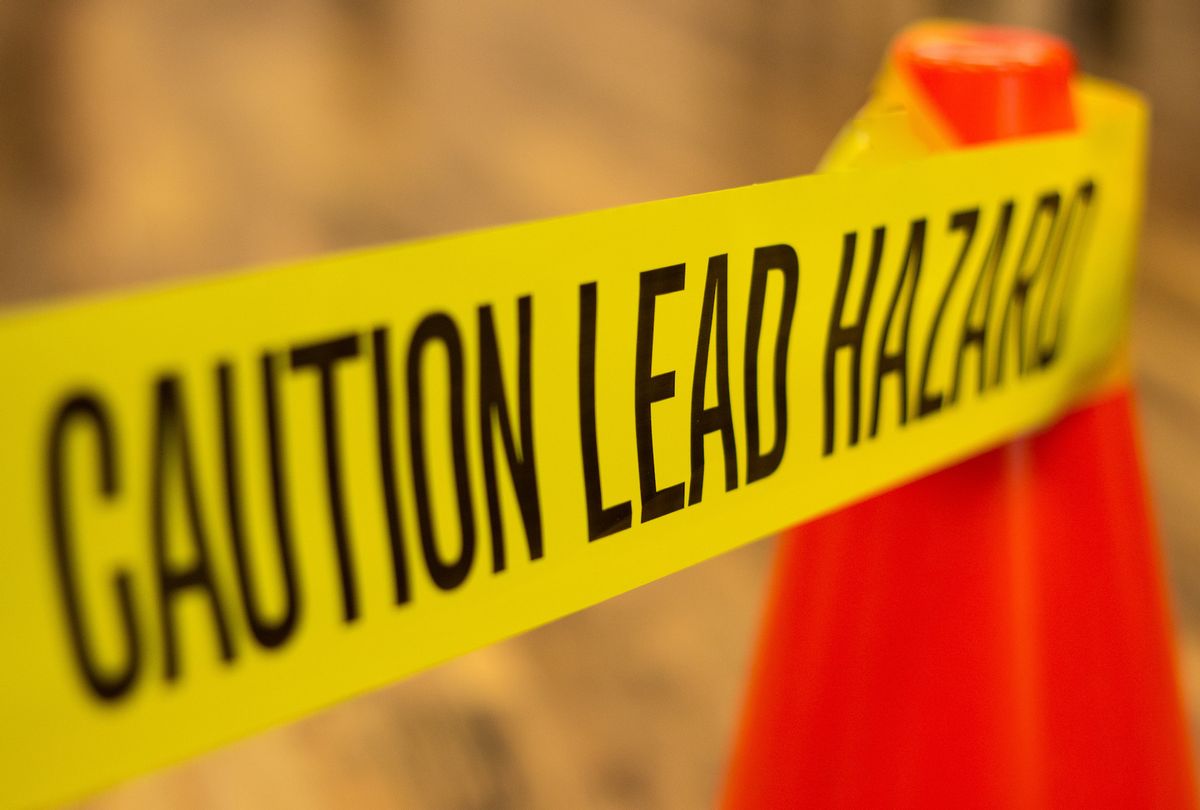The Environmental Protection Agency is proposing strict standards on lead paint that would prompt the removal of lead in millions of buildings, including homes, schools, and daycare centers. The move was set in motion by a lawsuit from environmental groups alleging that the EPA's lead standards were too lax to protect public health.
Even after decades of efforts to reduce lead exposure from gasoline, pipes, and paint, half of children in the U.S. have detectable traces of lead in their blood, according to a study in 2021 that tested more than 1 million kids under the age of 6. Those who live in low-income neighborhoods and in older homes are at the highest risk.
"We know that no level of exposure to lead is good for our children. Zero," said Janet McCabe, the EPA's deputy administrator, at an announcement of the proposal in Newark, New Jersey, on Wednesday. The metal has been found to damage children's brains, slow their growth, and cause developmental and behavioral problems, according to the Centers for Disease Control and Prevention.
While the United States banned lead paint nearly half a century ago, the rules didn't require removing the toxic substance from existing buildings. An estimated 31 million houses built before the 1978 ban still have lead paint, and nearly 4 million of those homes are occupied by families with children younger than 6. The EPA's new rule would virtually prohibit lead dust, reducing exposure for between 250,000 and 500,000 children under the age of 6.
Any sign of lead in a home or childcare center would classify it as a lead hazard. That would in turn trigger disclosures — say, to the families of kids attending the daycare or to prospective home buyers — and potentially require that the lead source be removed. The only exception is for contamination that existing cleanup methods can't get rid of.
The plan was decades in the making. In 1992, after scientists found lead exposure was widespread among children, Congress passed a law requiring the EPA to establish the first hazard standard for lead in dust. But the agency was slow to create the standard, waiting until 2001 to do so, and it failed to tighten the rules when scientific evidence showed that lead was a health hazard even at the smallest levels of exposure.
Court battles ended up forcing the agency to revisit its lead standards — twice. The most recent lawsuit, filed 2019 by the Sierra Club, Earthjustice, and other public health and environmental groups, alleged that the EPA's revised standards were still insufficient. In 2021, the U.S. 9th Circuit Court of Appeals ordered the EPA to set its standards based on health effects, as opposed to factors like feasibility and testing capabilities — a decision that prompted the EPA's new proposed rule. Before an EPA regulation becomes final, it has to move through a public comment period.
Environmental groups applauded the EPA's new, stricter proposal but admonished the agency for decades of delay. "Today's proposal, which finally acknowledges that any exposure to lead at any level is a hazard, is a gigantic leap forward in this country's long-delayed efforts to eliminate, or at least significantly reduce, lead exposures," said Eve Gartner, the director of Earthjustice's Crosscutting Toxics Strategies program, at the EPA's announcement on Wednesday.
Removing lead from buildings won't necessarily erase the threat entirely. For example, a recent investigation from the Wall Street Journal unearthed a hidden source of lead contamination in the environment: a countrywide network of lead-coated cables laid by telecom giants such as AT&T and Verizon that have gone unnoticed by regulators. It's another sign that removing lead, with its once-ubiquitous use in the country's construction, remains a daunting task.
This article originally appeared in Grist at https://grist.org/health/epa-rule-eliminate-lead-paint-buildings-homes/.
Grist is a nonprofit, independent media organization dedicated to telling stories of climate solutions and a just future. Learn more at Grist.org
Read more
about the environment




Shares